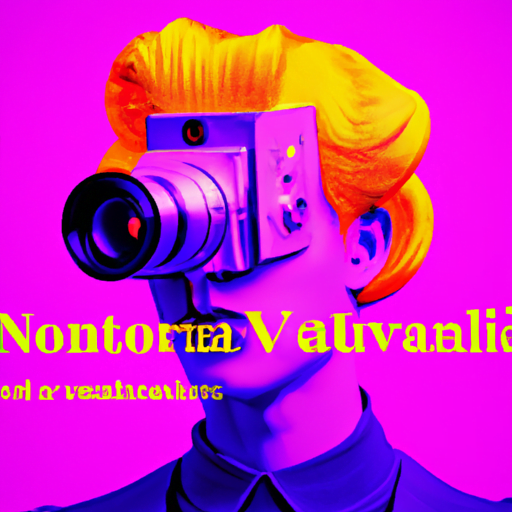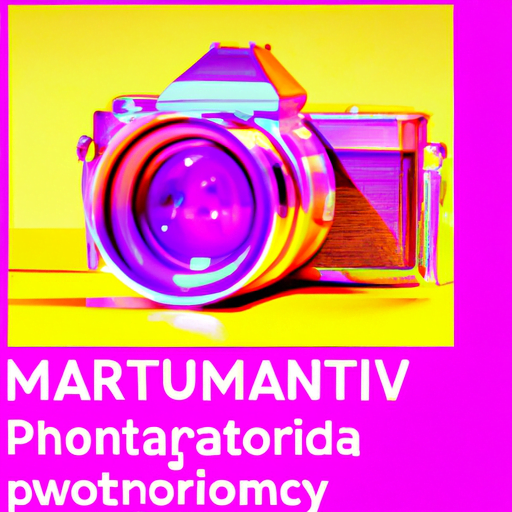
-
Table of Contents
Futurism in Graphic Design: Imagining Tomorrow’s World

Graphic design has always been a reflection of the times, capturing the spirit and aesthetics of a particular era. As we move further into the future, the role of graphic design becomes even more crucial in shaping our perception of what lies ahead. Futurism in graphic design is a fascinating field that explores the possibilities and imagines tomorrow’s world. In this article, we will delve into the concept of futurism in graphic design, its impact on society, and the techniques used to create futuristic designs.
The Concept of Futurism in Graphic Design
Futurism in graphic design is an artistic movement that emerged in the early 20th century, focusing on the aesthetics of the future and embracing technological advancements. It is characterized by bold, dynamic, and innovative designs that convey a sense of progress and forward-thinking. Futuristic designs often incorporate elements such as geometric shapes, vibrant colors, and sleek typography to create a visual representation of what the future might look like.
One of the pioneers of futurism in graphic design was the Italian artist and designer Fortunato Depero. His work, particularly his iconic “Bolted Book,” showcased a unique blend of typography, illustration, and graphic design that embodied the spirit of the future. Depero’s designs were not only visually striking but also pushed the boundaries of traditional graphic design, setting the stage for future generations of designers to explore the possibilities of futurism.
The Impact of Futurism in Graphic Design
Futurism in graphic design has had a profound impact on society, influencing various industries and shaping our perception of the future. Here are some key areas where futurism in graphic design has made its mark:
- Advertising: Futuristic designs are often used in advertising campaigns to create a sense of innovation and excitement. Companies leverage the aesthetics of the future to position their products or services as cutting-edge and ahead of their time. For example, car manufacturers often use sleek and futuristic designs in their advertisements to convey a sense of speed, technology, and progress.
- Technology: The field of technology is heavily influenced by futurism in graphic design. From user interfaces to product packaging, futuristic designs are used to create a sense of modernity and innovation. Companies like Apple have embraced minimalist and futuristic design principles, which have become synonymous with their brand identity.
- Entertainment: Futuristic designs are commonly seen in movies, video games, and other forms of entertainment. These designs help create immersive and visually stunning worlds that transport audiences into the future. The “Tron” movie franchise, for example, is known for its futuristic visual style, featuring neon lights, sleek interfaces, and advanced technology.
- Architecture: Futurism in graphic design has also influenced the field of architecture. Architects often use futuristic designs to conceptualize and visualize buildings and structures that push the boundaries of traditional design. The works of architects like Zaha Hadid and Santiago Calatrava showcase futuristic elements, such as fluid forms and innovative materials, that challenge conventional architectural norms.
Techniques Used in Futuristic Graphic Design
Creating futuristic designs requires a combination of artistic vision and technical skills. Here are some techniques commonly used in futurism in graphic design:
- Geometric Shapes: Futuristic designs often incorporate geometric shapes, such as triangles, squares, and circles, to create a sense of order and precision. These shapes can be used as building blocks to construct complex and visually striking compositions.
- Vibrant Colors: Bold and vibrant colors are a hallmark of futuristic designs. Colors like neon green, electric blue, and vibrant purple are commonly used to create a futuristic atmosphere. These colors evoke a sense of energy and innovation.
- Sleek Typography: Futuristic designs often feature sleek and minimalist typography. Sans-serif fonts with clean lines and sharp edges are commonly used to convey a sense of modernity and simplicity.
- Minimalism: Futuristic designs often embrace minimalism, focusing on essential elements and removing unnecessary details. This minimalist approach creates a sense of clarity and allows the key elements of the design to stand out.
- Technology-inspired Elements: Futuristic designs often incorporate elements inspired by technology, such as circuit patterns, holographic effects, and futuristic interfaces. These elements help create a visual connection to the future and convey a sense of technological advancement.
Case Study: Nike’s Futuristic Advertising Campaign
Nike, a global leader in athletic footwear and apparel, has successfully incorporated futurism in its advertising campaigns. One notable example is their “Nike Air” campaign, which showcased their innovative Air cushioning technology in a futuristic and visually captivating way.
The campaign featured sleek and dynamic designs that emphasized the futuristic nature of the product. The use of geometric shapes, vibrant colors, and sleek typography created a sense of energy and innovation. The advertisements showcased athletes in action, surrounded by futuristic elements like neon lights and holographic effects, further reinforcing the idea of progress and technological advancement.
The Nike Air campaign not only positioned the product as cutting-edge but also created a strong brand identity that resonated with consumers. By leveraging futurism in graphic design, Nike was able to capture the imagination of their target audience and establish themselves as a leader in the industry.
Conclusion
Futurism in graphic design is a powerful tool that allows us to imagine and shape tomorrow’s world. Through bold and innovative designs, futurism influences various industries, from advertising to technology and entertainment. By incorporating techniques such as geometric shapes, vibrant colors, sleek typography, and minimalism, designers can create visually striking representations of the future.
As we continue to embrace technological advancements and explore new possibilities, futurism in graphic design will play an increasingly important role in shaping our perception of what lies ahead. By pushing the boundaries of traditional design and embracing the aesthetics of the future, graphic designers have the power to inspire, captivate, and create a vision of tomorrow’s world.
